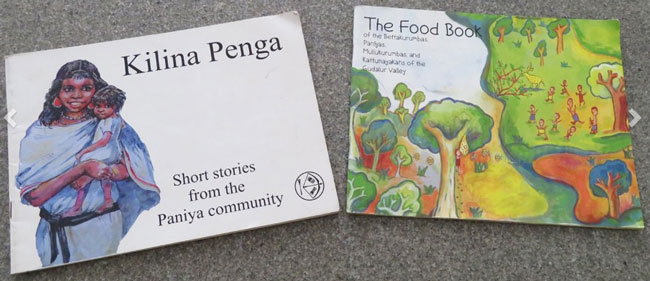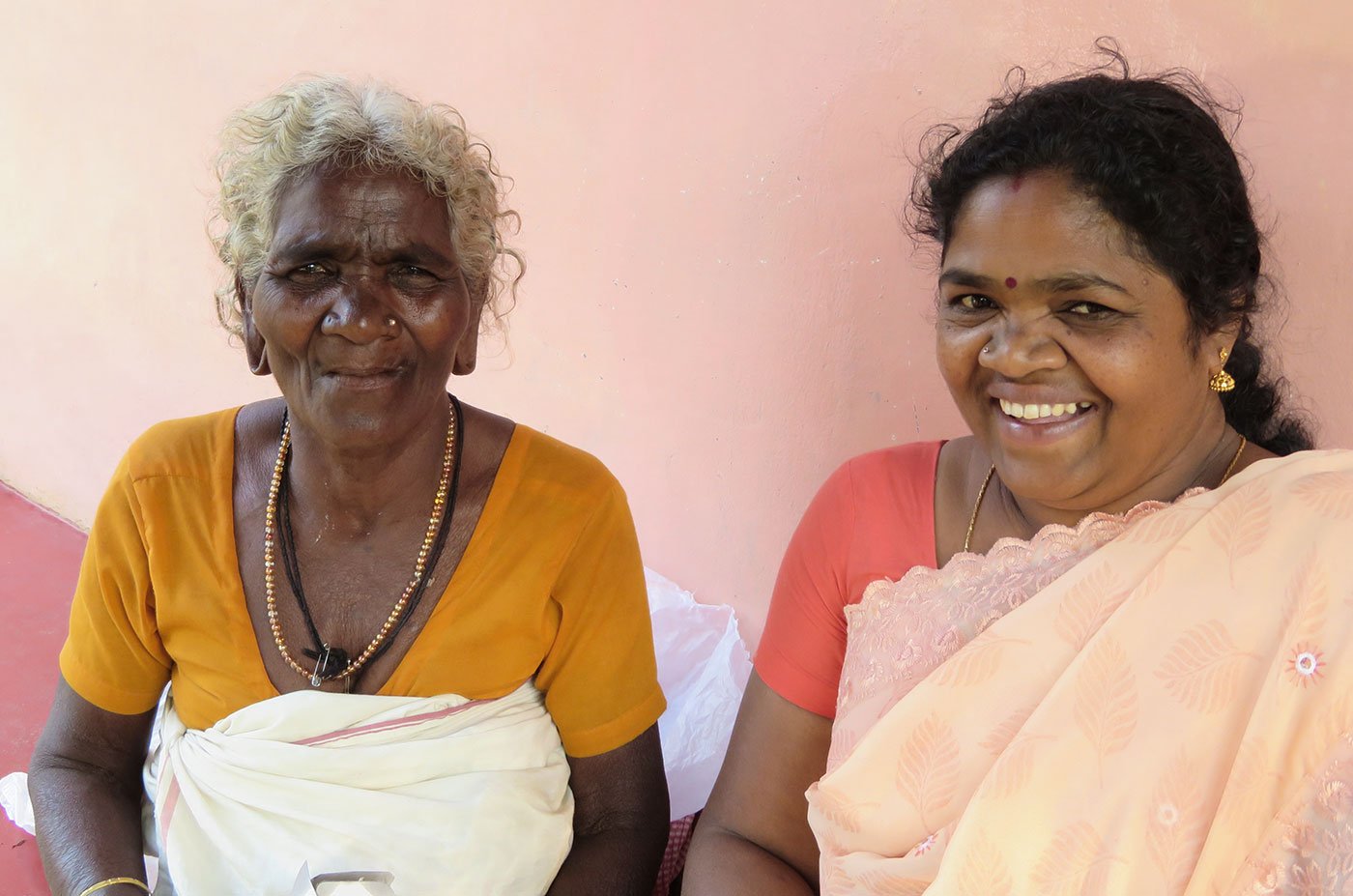The forest in Shanthi Teacher’s classroom
Priti David, Ruralindiaonline.org May 23, 2018 | To read the full story or view a slideshow, click here | View on Instagram >>

The forest enters the classroom at Vidyodaya School, Gudalur, when ‘Shanthi Teacher’ starts the mathematics session. Adivasi children, mostly nine-year-olds in this class, scurry outside, climbing trees and scouring the forest floor for long sticks. Later, they will mark these into metre lengths and measure the walls of their homes. Lessons on simple measurement begin this way.
Much of the curriculum at this school in Gudalur taluk of Tamil Nadu’s Nilgiris district incorporates the forests and the Adivasi way of life. Morning assembly has tribal songs and dances. Afternoons are spent learning tribal crafts. Regular ‘nature’ walks in the forest, sometimes led by one of the parents, teach the students about plants, pathways, observation and the importance of silence.
A Vidyodaya textbook called The Food Book has exercises that draw on the hunting, fishing, culture and cultivation traditions of local tribes. In library class, a student can pick up Kilina Penga (Sister of the Parrots), a book of short stories of the Paniyan tribe, curated by the school. Parents often visit, sometimes as guest lecturers on tribal customs. “We want to ensure that schooling nurtures Adivasi culture and does not alienate tribal children from their parents,” says Rama Sastry, former principal and main architect of the school’s inclusive curriculum. Having Adivasi teachers, sympathetic and committed to these aims, helps. As Janaki Karpagam, a senior teacher and Paniyan Adivasi herself, puts it: “If our culture is taught in schools, there is no shame and children will never forget.” […]
“The tribals had been led to believe that they were ‘uneducatable’, but when they saw the few tribal children in our school flourishing, they were convinced that it was the system and not the children at fault,” says B. Ramdas, managing trustee of the Viswa Bharathi Vidyodaya Trust, which manages the school. He ran the school with his wife Rama, the principal, in their home.
Now Shanthi Kunjan, 42, a Paniyan Adivasi, heads this free primary school in the Nilgiris district. Both teachers and students are Adivasis, mostly Paniyan. The rest are Betta Kurumba, Kattunayakan and Mullu Kurumba. The Census of India 2011 counts 10,134 Paniyans, only 48.3 per cent of them literate. That’s 10 per cent lower than the average for all Scheduled Tribes, and way below the national literacy rate of 72.99 per cent.
With a BA in History, Shanthi defies the statistics of her tribe. […]
Shanthi joined Vidyodya 15 years ago and is proud of the fact that today all young Paniyan children in her neighbourhood attend one of the over 100 schools registered in Gudalur taluk. But areas like Muchikundu, where she lived before an elephant tore down her house, are quite remote and enrolment is still a challenge. “I want to reduce dropout rates by talking to parents,” she says. […]
Source: The forest in Shanthi Teacher’s classroom
URL: https://ruralindiaonline.org/articles/the-forest-in-shanthi-teachers-classroom
Date accessed: 8 June 2018
Subscribe to Vidyodaya’s educational videos on YouTube: Kaathadi >>
